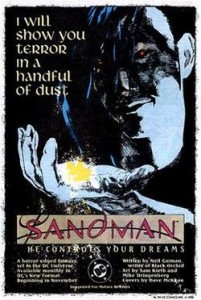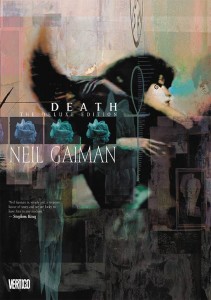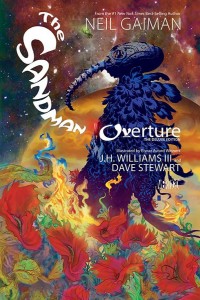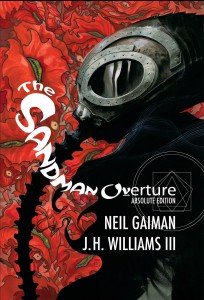 November 29th marked the 30th Anniversary of the debut of Neil Gaiman’s Sandman. The original 75 issue run ended in March of 1996, but few characters in the comics world (especially outside of the superhero genre) have held on to the imagination of readers for three decades the way that Gaiman’s dark prince Morpheus has.
November 29th marked the 30th Anniversary of the debut of Neil Gaiman’s Sandman. The original 75 issue run ended in March of 1996, but few characters in the comics world (especially outside of the superhero genre) have held on to the imagination of readers for three decades the way that Gaiman’s dark prince Morpheus has.
On any list of the most influential comics in the last fifty years, Sandman is sure to make the cut. But on many lists of banned comics, it’s likely Sandman will be there too. Why is it that some people find Sandman inappropriate, while others find it a critical example of literature in the world of comics?
Past Censorship
In June 2015, The Sandman Vol. 2: The Doll’s House was one of four graphic novels that a 20-year-old college student and her parents said should be “eradicated from the system” at Crafton Hills College in Yucaipa, California. After completing an English course on graphic novels, Tara Shultz publicly raised objections to Persepolis, Fun Home, Y: The Last Man Vol. 1, and The Sandman Vol. 2: The Doll’s House as “pornography” and “garbage,” saying that Associate Professor Ryan Bartlett “should have stood up the first day of class and warned us.” Crafton Hills administrators responded with a strong statement in support of academic freedom, although President Cheryl Marshall did note that future syllabi for the graphic novel course will include a disclaimer “so students have a better understanding of the course content.” CBLDF joined the National Coalition Against Censorship to protest this attack on academic freedom, and the district backed away from the proposed disclaimer plan.
Adding Sandman to Your Library or Classroom
Before deciding to add Sandman to your classroom or library, it might be helpful if you see what kind of support it has from the literary community. These are just some of the things that have been said about the graphic novel series.
From The Los Angeles Times Magazine, “The greatest epic in the history of comic books.”
From School Library Journal,
Gr 7 Up — There is no question that the books in Gaiman’s “Sandman” series (Vertigo) are some of the best and most groundbreaking graphic novels ever written. The artwork shows unique characters whose images change from story to story as each artist reinterprets them. Dream and his Endless siblings — Death, Destiny, Desire, Delirium, Destruction, and Despair-weave in and out of these books, interacting with one another and with mortals at different points in history. The Doll’s House tells the story of a young woman named Rose Walker who does not know that she is a dream vortex, and who has to overcome many obstacles to rescue her little brother from captivity. Dream Country contains four stories, including the World Fantasy Award-winning “A Midsummer Night’s Dream,” in which Shakespeare premieres his new play before a group of faeries. Over the years, the books in this series have been released multiple times, first in paperback and later in hardcover. The question remains whether or not these recolored editions are worth purchasing. The short answer is no–not if you already have the series and the books are in good condition. But if you need to replace your weathered copies, or if you are just learning about the Sandman based on the fame of Gaiman’s more recent books, then these books are definitely worth purchasing. –Andrea Lipinski, New York Public Library (reviewing “The Sandman”” Vols. 2 and 3)
With “The Sandman Omnibus,” each book is shrewdly designed by Louis Prandi to look like an ancient mystic tome. It’s spellbinding to watch Mr. Gaiman — from first wobbly, coltlike steps to thoroughbred confidence — create one of fantasy literature’s deep mythologies. In these tales of Morpheus, the King of Dreams, and his siblings — Death, Desire, Despair, Delirium, Destruction and Destiny — Mr. Gaiman forged a broad fan base that faithfully followed him to his novels, as Sandman won 19 Eisner and six Harvey industry awards, and the tale “A Midsummer Night’s Dream” snagged the World Fantasy Award for short fiction, a first for a comic-book story.
The strong writing of Mr. Gaiman, recently appointed an arts professor by Bard College, is complemented by Dave McKean’s chilling and elegant covers and by a range of fine artists, including P. Craig Russell, Jon J. Muth and Charles Vess — though the series sometimes succumbed to DC’s ordinary house style of the 1990s, an unsettling counterpoint to Mr. Gaiman’s extraordinary prose.
And for those who aren’t sated by the more than 2,000 pages about Mr. Gaiman’s hero with the moon-pale skin, there’s good news. On Oct. 30, Vertigo released the first issue of The Sandman: Overture, a bimonthly mini-series that features Mr. Gaiman’s first Sandman story in 10 years (with art by J. H. Williams) and will serve as a prequel to the Morpheus saga.
Toward the end of Mr. Gaiman’s “Midsummer Night’s Dream,” an unlikely collaboration with Shakespeare that appears in the first volume of the “Omnibus,” Morpheus says, “Tales and dreams are the shadow-truths that will endure when mere facts are dust and ashes, and forgot.” That’s surely true, as these two volumes prove over and over. Sweet dreams, dear reader.
Sandman Discussion Guides
Whether considering Sandman for a curriculum, a book club, or a school project, CBLDF can help you delve deeper into the first four collected volumes (or the majority of the first omnibu volume) with our discussion guides.
Given their visual nature, comics are easy targets for would-be censors. CBLDF Discussion Guides are tools that can be used to lead conversations about challenged graphic novels and to help allay misconceptions about comics. CBLDF Discussion Guides can be used by librarians, educators, retailers, or anyone who wants to lead a conversation about a graphic novel.
Download pdf copies of the individual discussion guides here, or flip through all four below.
Sandman Discussion Guides by Patricia Mastricolo on Scribd
Don’t Take Our Word For It
- World Fantasy Award, 1991: Best Short Fiction for “A Midsummer’s Nights Dream” in Sandman #19
- Bram Stoker Award, 2003: Best Illustrated Narrative for Sandman: Endless Nights
- Eisner Awards: The Sandman Series
- 1991-1994: Best Writer, Neil Gaiman
- 1991-1993: Best Continuing Series
- 1991: Best Graphic Album (Reprint), Sandman: The Doll’s House
- 1992: Best Single Issue/Single Story, Sandman #22-28
- 1992, 1994, 1995: Best Editor, Karen Berger
- 1993-1995, 1997, 2000, 2002, 2004: Best Letterer/Lettering, Todd Klein
- 1994: Best Artist/Penciller/Inker or Penciller/Inker Team, P. Craig Russell for Sandman #50
- 1997: Best Artist/Penciller/Inker or Penciller/Inker Team, Charles Vess for Sandman #75
- 2000: Best Comics-Related Book, Sandman: The Dream Hunters (prose)
- 2004: Best Short Story, “Death” by P.Craig Russell and Neil Gaiman in Sandman: Endless Nights
- 2004: Best Anthology, Sandman: Endless Nights
- 2007: Best Archival Collection/Project, Absolute Sandman, Vol. 01
- Harvey Awards: The Sandman Series
- 1991-1992: Best Writer, Neil Gaiman
- 1992,1993, 1995: Best Letterer, Todd Klein
- 1993: Best Continuing or Limited Series
- Angoulême International Comics Festival Prize, 2004: Best Scenario for Sandman: Seasons of Mist (prose)
Future Censorship Attempts
What do you do if someone is attacking Sandman at your school or library? First email CBLDF or call us at 1 800 99 CBLDF (22533) and tell us what’s going on. CBLDF has crucial experience dealing with censorship challenges and can provide assistance with locating review resources, writing letters of support, and facilitating access to experts and information. CBLDF is here to advise you on the best steps to follow to help prevent challenges and protect literary works, including:
1. Make Strong Policies.
Strong selection and challenge review policies are key for protecting access to library materials, including comics. The American Library Association has developed a number of excellent tools to assist school and public libraries in the essential preparation to perform before books are challenged here.
2. Face the Challenge.
What do you do when a comic is challenged? The American Library Association has developed these helpful tools to cope with challenges:
- Conducting a Challenge Hearing
- Strategies and Tips for Dealing with Challenges
- Sample Request for Reconsideration of Library Resources
CBLDF can also help by providing assistance with locating review resources, writing letters of support, and facilitating access to experts and resources. Call 800-99-CBLDF or email info@cbldf.org at the first sign of a First Amendment emergency!
3. Report the Challenge.
Another essential step in protecting access to comics is to report challenges when they occur. By reporting challenges, you help the free expression community gather necessary information about what materials are at risk so better tools can be created to assist. To report a challenge to the Comic Book Legal Defense Fund, call us at 800-99-CBLDF or email CBLDF. You can also report the challenge to the Kids’ Right to Read Project, a CBLDF-sponsored program from the National Coalition Against Censorship and one of our frequent partners in the fight against censorship. Finally, you can report the challenge to ALA here.
Get Your Very Own Signed Copy
Help support CBLDF’s important First Amendment work by visiting the Rewards Zone, making a donation, or becoming a member of CBLDF!


